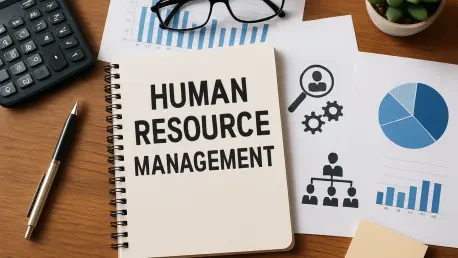Imagine a world where every resource, be it human talent, natural assets, or cutting-edge technology, is utilized with such precision that it not only addresses today’s pressing demands but also paves the way for groundbreaking advancements in the years to come. This vision lies at the core of sustainable innovation, a concept rapidly gaining momentum across industries and regions facing diverse challenges. The path to achieving this balance is rooted in strategic resource management—a discipline that aligns assets with long-term objectives to generate value while curbing waste. Insights drawn from recent academic research, including a comprehensive Autumn 2024 journal issue on resource management and decision engineering, highlight the transformative potential of this approach. Spanning sectors from education to energy, the findings from 18 in-depth studies reveal how resources, when orchestrated with purpose, become catalysts for lasting change. This article delves into the mechanisms through which effective resource management can ignite sustainable innovation, exploring dimensions like human capital, technology, sustainability, culture, and governance. The goal is to uncover actionable strategies for leaders and policymakers striving to build systems that thrive now and endure into the future.
The stakes of poor resource management are high, often resulting in squandered potential, wasted investments, and missed opportunities for progress, while thoughtful oversight can turn limitations into stepping stones for innovation. This is clearly evidenced by real-world applications in regions like Iraq and Iran. From reshaping higher education through innovative human resource models to tackling water scarcity with novel strategies, the evidence points to a singular truth: resources are far more than mere tools—they are the building blocks of a better tomorrow. This exploration will navigate through key areas where resource management intersects with sustainable innovation, offering a roadmap for turning challenges into opportunities. Each dimension, backed by rigorous research, provides unique lessons while underscoring universal principles like adaptability and data-driven planning. The journey begins with the human element, often the most critical factor in driving meaningful change.
Human Resource Management as a Foundation for Innovation
Empowering People for Lasting Change
Human resource management (HRM) extends far beyond traditional roles of recruitment and termination; it serves as a powerful engine for fostering creativity and adaptability within organizations, driving transformative change. Groundbreaking studies from Iraq and Iran demonstrate how innovative HR models can fundamentally transform institutions, particularly in sectors like higher education and knowledge-based industries. For instance, in Iraqi universities, strategic frameworks focus on formulating innovation-driven policies, nurturing organizational culture, and enhancing human capabilities through targeted initiatives. These efforts reveal that when HR practices are aligned with overarching organizational goals, they unlock a workforce’s potential to drive sustainable growth. The emphasis on structured approaches, such as clear goal setting and consistent feedback mechanisms, proves instrumental in elevating performance. Moreover, tailoring training programs to reflect local cultural nuances ensures greater relevance and impact, amplifying the effectiveness of these strategies. This alignment not only boosts individual productivity but also positions human capital as a cornerstone of long-term innovation.
Equally significant is the role of empowerment in cultivating a dynamic workplace environment where employees feel valued and motivated to contribute their best efforts. Research underscores that skill-building initiatives, when paired with opportunities for professional growth, lead to measurable improvements in organizational outcomes. In knowledge-based firms across Iran, for instance, HR strategies prioritize continuous learning and development, enabling teams to adapt to evolving industry demands. This focus on empowerment transcends mere job satisfaction; it creates a culture where innovation becomes second nature. Employees equipped with the right tools and encouragement often spearhead novel solutions to complex challenges, proving that human resources are not just assets but active drivers of change. The ripple effects of such practices extend beyond individual organizations, influencing broader sectoral progress by setting new standards for operational excellence.
Building Trust and Loyalty
Beyond technical skills and training, HRM must prioritize the cultivation of trust and loyalty among employees to sustain innovation over time. Research from Iranian universities highlights how sustainable HR practices contribute to organizational legitimacy by fostering a sense of belonging and commitment among staff. When employees perceive their contributions as integral to the organization’s mission, they are more inclined to offer fresh perspectives and innovative ideas. This emotional investment transforms workplaces into hubs of creativity, where individuals are motivated not just by personal gain but by a shared vision of success. The studies emphasize that trust-building is a deliberate process, requiring consistent communication and policies that prioritize fairness and recognition. Such an environment ensures that human resources are leveraged not only for immediate tasks but also for enduring advancements.
Participatory decision-making emerges as a critical factor in strengthening employee loyalty and engagement, as it actively involves staff in meaningful ways. By including employees in strategic discussions and problem-solving, organizations demonstrate respect for their insights, which further deepens trust. Evidence suggests that this approach creates a committed workforce willing to go the extra mile, particularly in high-stakes sectors like academia and technology. The long-term benefits are clear: a loyal team becomes a reliable source of innovation, capable of navigating challenges with resilience. Trust, while not built overnight, delivers substantial returns in the form of a cohesive unit dedicated to organizational goals. This foundation of loyalty ensures that human resources remain a sustainable driver of progress, capable of adapting to future uncertainties with confidence and creativity.
Sustainability: Balancing Growth and Responsibility
Tackling Industry-Specific Challenges
Sustainability stands as a pivotal pillar of modern resource management, particularly in high-impact industries such as oil and professional sports, where growth often clashes with environmental and social responsibilities. In Iraq’s oil sector, integrating environmental, social, and governance (ESG) frameworks is no longer optional but a critical step toward achieving global competitiveness. Research indicates that adopting sustainability-oriented strategies, such as adaptive market intelligence and stakeholder engagement, can position the industry for long-term viability while minimizing ecological harm. These approaches demonstrate that economic expansion need not come at the expense of the planet; instead, thoughtful resource allocation can create mutually beneficial outcomes. The challenge lies in navigating systemic barriers, including legal deficiencies and economic constraints, which often hinder progress. Overcoming these obstacles requires coordinated efforts among industry leaders, policymakers, and communities to align priorities and resources effectively.
Similarly, the realm of professional sports in Iraq faces unique sustainability hurdles, such as limited funding and inadequate infrastructure, which impede development. Studies suggest that strategic investments and enhanced media outreach can address these gaps, fostering a sustainable model for growth. By prioritizing resource allocation toward capacity building and public engagement, the sector can achieve both economic and social gains. This dual focus underscores a broader lesson: sustainability is not a peripheral concern but a core necessity across diverse fields. Collaboration among stakeholders emerges as a recurring theme, ensuring that initiatives are not only implemented but also sustained over time. The success of such strategies hinges on a commitment to balancing immediate needs with future-oriented goals, proving that responsible resource management can redefine industry standards.
Resource Scarcity and Innovative Solutions
Resource scarcity, particularly in critical areas like water management, demands innovative solutions that prioritize long-term stability over short-term fixes, and in Iran’s Khuzestan Province, research highlights the importance of non-structural approaches and industrial efficiency in conserving vital water resources. By focusing on systemic changes—such as optimizing consumption patterns and improving infrastructure—local authorities can mitigate the impacts of scarcity while supporting economic activity. These efforts reveal that sustainability is not merely about restriction but about reimagining how resources are used. Data-driven analysis plays a crucial role in identifying high-impact measures, ensuring that interventions are both practical and effective. The lessons from this region emphasize the need for tailored strategies that respect local conditions while addressing universal challenges, providing a blueprint for other resource-constrained areas.
Renewable energy projects offer another compelling example of how sustainability and innovation intersect to deliver multifaceted benefits. Studies show that such initiatives not only drive economic growth through job creation but also enhance social capital by empowering local communities. This dual impact illustrates the potential of sustainable resource management to transform societies, balancing immediate economic needs with environmental stewardship. Adapting solutions to specific regional realities remains essential, as a one-size-fits-all approach often falls short. The integration of research and technology in these projects further amplifies their effectiveness, enabling precise allocation of resources. Ultimately, these examples underscore that sustainable practices in resource management are not just reactive measures but proactive steps toward enduring progress and resilience.
Technology as a Catalyst for Efficiency
Digital Tools Transforming Outcomes
Technology, encompassing innovations like artificial intelligence (AI) and smart grid systems, is fundamentally reshaping the landscape of resource management by driving unprecedented levels of efficiency. In Iran’s automotive market, AI is revolutionizing customer experiences through personalized marketing and responsive social media interactions, leading to higher satisfaction and loyalty. Similarly, smart government models in public institutions are enhancing service delivery by leveraging robust digital infrastructure to meet citizen needs more effectively. These advancements are not mere novelties; they represent transformative tools that optimize resource use across diverse sectors. The ability of technology to streamline processes and reduce waste positions it as an indispensable ally in the pursuit of sustainable innovation. However, the effectiveness of these tools depends on strategic integration with existing systems to ensure seamless operation and maximum impact.
The broader implications of digital tools extend beyond individual industries, offering scalable solutions to systemic challenges that can transform various sectors. For instance, the adoption of smart systems in public administration not only improves transparency but also ensures that resources are allocated where they are most needed. Yet, the success of such technologies hinges on the presence of supporting frameworks, including updated infrastructure and a skilled workforce capable of managing these systems. Without these elements, even the most advanced tools risk underperforming or becoming liabilities. Research consistently points to the importance of aligning technological investments with organizational priorities to avoid wasted resources. This strategic approach ensures that digital innovations contribute meaningfully to efficiency, paving the way for sustainable growth in both private and public domains.
Overcoming Implementation Barriers
Implementing technological solutions often presents significant hurdles that must be addressed to unlock their full potential in resource management, and studies on smart grids reveal key challenges in this area. For example, reducing packet loss and improving recovery times requires sophisticated algorithms and ongoing training for technical staff. These challenges are not insurmountable, but they demand careful planning and investment in both hardware and human capital. The complexity of integrating new systems into existing frameworks can lead to delays or inefficiencies if not managed properly. Addressing these barriers involves a multi-faceted approach, including stakeholder collaboration and iterative testing to refine solutions. When executed effectively, the results can be transformative, enabling organizations to optimize resource use and enhance operational resilience in the face of evolving demands.
Another area where implementation challenges are evident is in smart pharmaceutical distribution systems, where governance and data-sharing protocols play a critical role. Research indicates that without clear policies and interoperable systems, the benefits of digital tools remain limited, leading to inefficiencies in supply chains. Overcoming these obstacles requires a commitment to building robust infrastructure and fostering a culture of collaboration among all parties involved. The payoff is substantial—systems that are both adaptive and reliable, capable of meeting current needs while anticipating future challenges. This focus on overcoming barriers ensures that technology serves as a true catalyst for sustainable innovation, rather than a source of frustration. By addressing these issues head-on, organizations can harness digital advancements to achieve lasting efficiency gains.
Organizational Culture and Behavior
Shaping Performance Through Trust
Organizational culture profoundly influences how resources are managed, often determining the success or failure of innovation initiatives. Research into sales teams within the clothing industry shows that emotional intelligence significantly enhances customer service quality, directly impacting business outcomes. When employees are equipped with the skills to understand and respond to client needs empathetically, resources such as time and effort yield greater returns. This dynamic highlights the importance of fostering a supportive environment where interpersonal skills are valued as much as technical expertise. Leadership plays a pivotal role in cultivating such a culture, setting the tone through policies and behaviors that prioritize trust and mutual respect. Without this foundation, even well-resourced organizations may struggle to achieve sustainable progress, as internal discord can undermine strategic goals.
Trust within teams also serves as a critical driver of resource efficiency, particularly in public sector organizations where accountability is paramount. Studies from Iran suggest that a blame-free management approach encourages responsibility and fosters a sense of ownership among employees. This cultural shift ensures that resources are not wasted on defensive posturing or conflict but are instead directed toward collaborative problem-solving. The impact of trust extends to innovation, as employees in supportive environments are more likely to propose and experiment with new ideas without fear of reprisal. Building such a culture requires consistent effort, including transparent communication and recognition of contributions at all levels. The result is a workforce that leverages resources with purpose, driving outcomes that are both immediate and enduring in their value to the organization.
Addressing Negative Behaviors
Negative behaviors among employees, such as deviance or disengagement, can significantly drain resources and impede organizational progress if left unchecked. Research from public offices in Iran’s Golestan Province reveals that such behaviors often stem from unclear policies or unresolved conflicts, leading to wasted time and effort. Addressing these issues requires proactive measures, including the establishment of clear guidelines that outline expectations and consequences. By creating a structured framework for behavior, organizations can minimize internal friction and redirect focus toward productive activities. This approach not only conserves resources but also fosters a more cohesive work environment where innovation can flourish. The importance of policy reform in this context cannot be overstated, as it provides the foundation for sustainable behavioral change.
Equally important is the role of conflict management in mitigating the impact of negative behaviors on resource utilization, ensuring that organizational energy is directed toward productive outcomes. Studies suggest that fostering open communication channels allows for early identification and resolution of issues before they escalate. Training programs that equip managers with mediation skills further enhance this process, ensuring that disputes are handled constructively. The benefits of such strategies are twofold: they prevent resource depletion due to internal strife and create a culture where employees feel heard and supported. This shift in focus from reaction to prevention ensures that organizational energy is channeled into growth and innovation rather than damage control. Over time, these efforts cultivate a workplace where resources are optimized through positive behavioral norms, laying the groundwork for lasting success.
Strategic Decision-Making and Governance
Frameworks for Systemic Impact
Strategic governance serves as the linchpin for transforming raw resources into structured, sustainable value across diverse sectors, ensuring that potential is harnessed effectively for societal benefit. In Iran’s budgeting system, for instance, models aimed at economic justice emphasize fiscal discipline and equitable resource distribution as core principles. These frameworks ensure that financial assets are allocated with a clear purpose, addressing both immediate needs and long-term societal goals. Transparency in decision-making processes is critical, as it builds trust among stakeholders and ensures accountability at every level. Without such structured approaches, resources risk being misdirected, leading to inefficiencies or missed opportunities for innovation. The evidence points to governance as a mechanism for aligning diverse interests, ensuring that every decision contributes to systemic progress rather than isolated gains.
Agile project management offers another compelling example of how strategic frameworks can optimize resource use in dynamic environments, and research from Iran’s Mapna Company highlights the importance of clear project definitions and strong team collaboration in achieving successful outcomes. By prioritizing adaptability and iterative planning, agile methodologies ensure that resources are deployed effectively, even amidst uncertainty. This approach underscores the value of stakeholder input in refining strategies, allowing for real-time adjustments that maximize impact. The broader lesson is that governance must be both proactive and responsive, capable of navigating complex challenges while maintaining a focus on long-term objectives. When executed well, such frameworks transform resource management into a powerful driver of sustainable innovation, delivering value across organizational and societal levels.
Adapting to Context and Complexity
Effective decision-making in resource management demands flexibility to address the unique complexities of each context, whether local or global. Research on open innovation through digital platforms illustrates the power of collaborative models in harnessing resources for creative solutions. By leveraging diverse perspectives and shared data, organizations can develop strategies that are both innovative and practical, tailored to specific challenges like economic constraints or market shifts. This adaptability ensures that resources are not wasted on rigid, outdated approaches but are instead directed toward dynamic opportunities. The ability to pivot based on real-time feedback and emerging trends is a hallmark of effective governance, enabling sustained progress in unpredictable environments.
Data-driven tools further enhance the capacity to navigate complexity, providing leaders with actionable insights for precise resource allocation, which is crucial in today’s dynamic environments. Studies emphasize that evidence-based planning helps mitigate risks associated with uncertainty, ensuring that decisions are grounded in reality rather than speculation. This approach is particularly vital in regions facing multifaceted challenges, where resources must be stretched to meet competing demands. Tailoring governance strategies to local nuances—such as cultural factors or infrastructural limitations—remains essential for success. The balance between adaptability and robustness in decision-making frameworks ensures that resources are not only preserved but also amplified in their impact. Ultimately, strategic governance, when attuned to context and complexity, sustains innovation by creating systems capable of evolving with the times.
Reflecting on Sustainable Pathways Forward
Looking back, the exploration of resource management as a driver of sustainable innovation revealed a tapestry of interconnected strategies that spanned human capital, sustainability, technology, culture, and governance. Each dimension, supported by rigorous academic insights, demonstrated how thoughtful allocation and oversight of resources transformed challenges into opportunities for lasting progress. From empowering employees in Iraq’s universities to integrating ESG frameworks in the oil sector, the evidence consistently pointed to the power of strategic alignment in achieving meaningful outcomes. The role of technology in amplifying efficiency and the importance of trust within organizational cultures further underscored the multifaceted nature of this discipline. These lessons, drawn from diverse regional contexts, offered a robust foundation for understanding how resources could be harnessed responsibly.
Moving forward, the focus should shift to actionable steps that build on these insights, prioritizing scalable solutions for both local and global challenges. Leaders and policymakers are encouraged to invest in integrated frameworks that combine human development, technological advancements, and sustainable practices, ensuring that resources are not depleted but replenished through innovative cycles. Collaboration across sectors will be key, as will the adoption of data-driven tools to refine decision-making processes. Organizations must also commit to fostering adaptive cultures that embrace change and accountability, turning potential barriers into stepping stones for growth. By embedding these principles into everyday operations, the path to sustainable innovation becomes not just a vision but a tangible reality, capable of shaping a resilient and thriving future for all.









